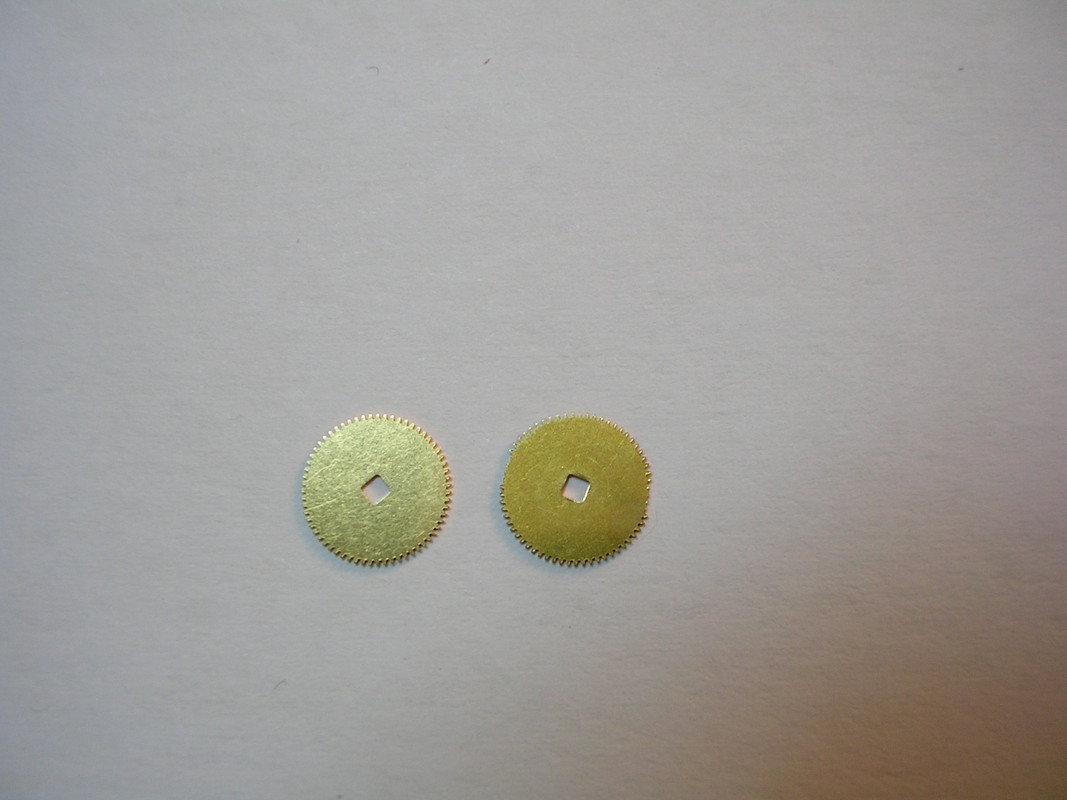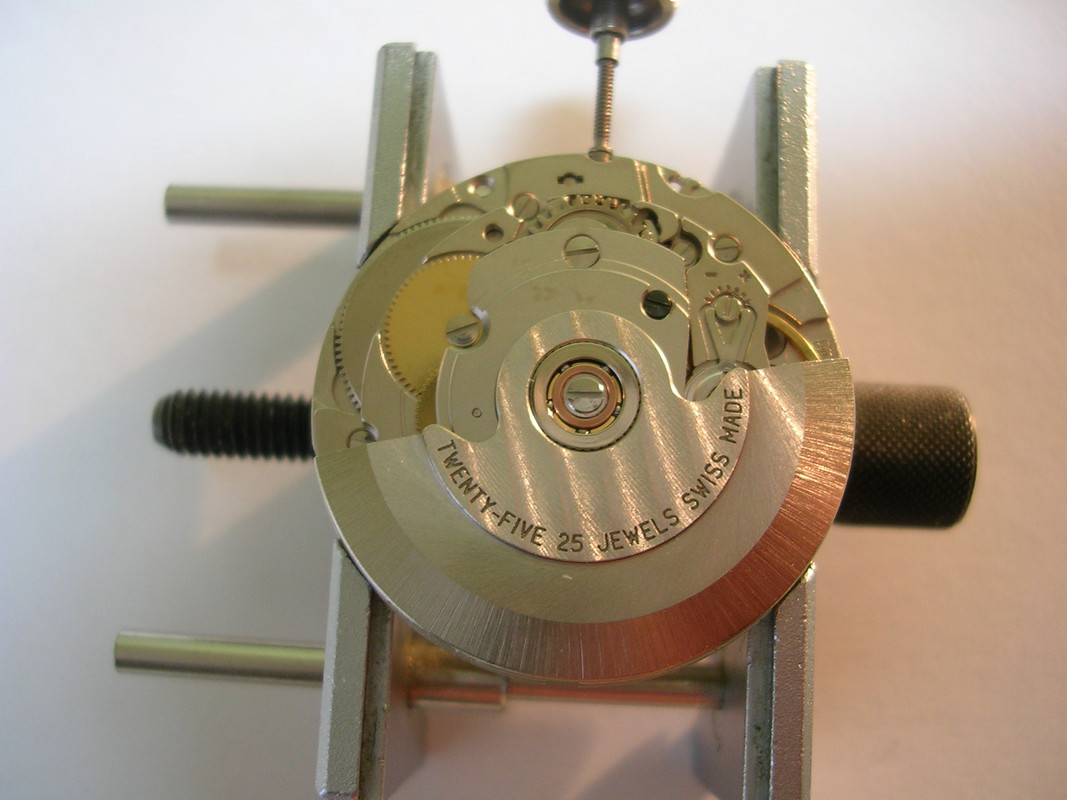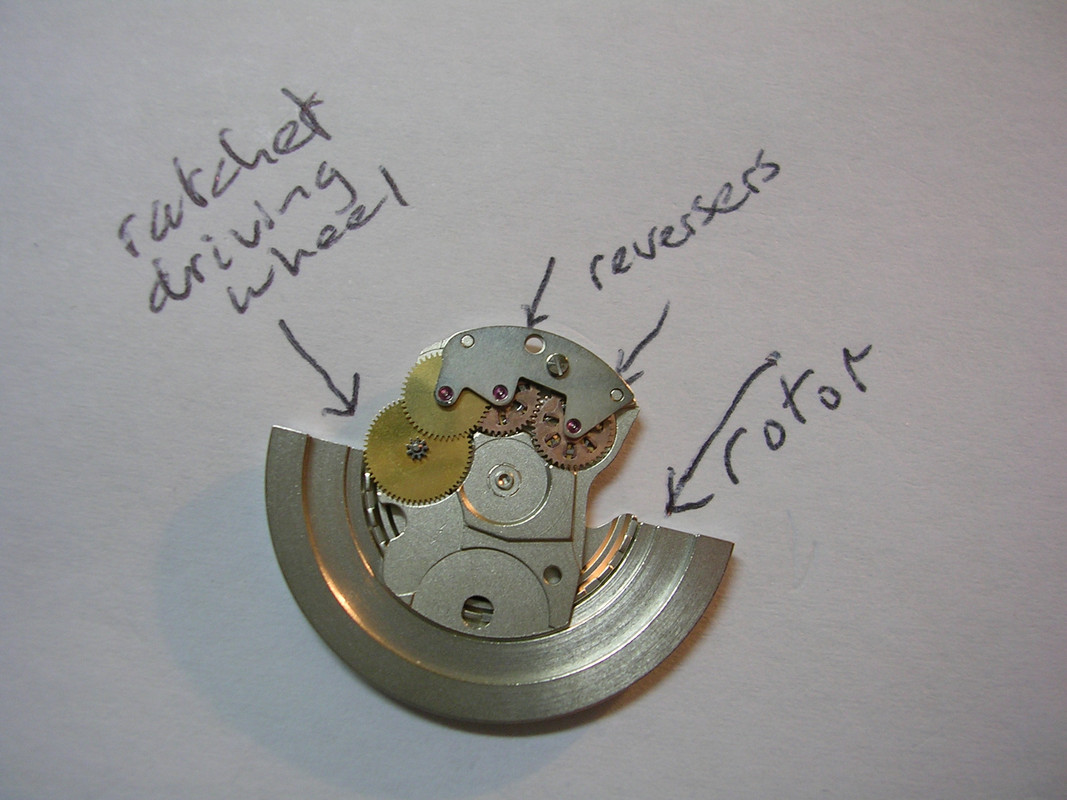A common fault with ETA 2824 and 2836 movements is sticking reversers. When this happens the hand-winding becomes tight and the rotor spins, if both reversers lock up and the determined owner continues to wind the crown something has to give and it's usually the teeth on the ratchet wheel that break. One of the odd features of this movement is the disparity between the crown wheel and ratchet wheel, the crown wheel has much larger teeth compared to the ratchet wheel, which seems odd, provided there are no problems all will be well for many years but the reversers are prone to sticking eventually. However, this fault can afflict quite new movements, don`t understand why but I`ve seen it happens a few times.
Here's a an example, a watch I`m currently fixing which came in with hand-winding issues. A combination of an owner determined to wind the watch (despite it feeling very wrong) aided by a big chunky crown resulted in a stripped ratchet wheel. Here's a pic of the damaged one (right) and the new replacement:
Here's a few pictures to show how the auto-winding and reversers work. The auto-winding bridge and rotor sit on top of the movement, the whole assembly is easy to remove:
The reversers consist of two wheels sandwiched together with a pinion attached to one wheel. In this application the reversers are both different, combined together they allow the rotation of the rotor to transfer motion to the ratchet driving wheel in one direction, the ratchet driving wheel can only move one way and the pinion in the centre engages with the ratchet wheel to wind the mainspring when the rotor moves either way.
There are various schools of thought regarding lubrication of ETA reversers, but the official method involves use of a special lubricant called Lubeta 105. The parts are immersed in the fluid which is a solution of lubricant in a solvent. Excess solvent is blown off and the wheels are dried to evaporate the solvent away, leaving a thin film of lubricant. The reversers contain tiny ratchets that allow the two wheels to move relative to each other in one direction only, it sounds far more complicated than it is.
The next picture indicates where the ratchet driving wheel pinion engages with the ratchet wheel when the auto-winding is replaced, it's also clear to see how the crown wheel drives the ratchet wheel during hand-winding.
When the watch is being hand-wound the one wheel on each reverser rotates rather quickly and the rotor should stay static, the hand-winding action should feel smooth. When the watch is fully hand-wound (approx. 30 turns on these) the mainspring will slip around the inside of the barrel walls in a controlled incremental manner, if all's well a faint clicking can be heard as the spring slip from one indentation in the wall to the next.
The advice I give to anyone when winding a watch is straightforward; if it feels wrong STOP! Fortunately the replacement parts are cheap and readily available for the ETA 2824 and Sellita SW200.1, the auto-winding can be serviced without stripping the whole watch, but if the ratchet wheel's lost some teeth they have to be somewhere and in such cases I always strip the movement completely......sods law states that the fragments of broke tooth will cause problems eventually!
With the auto-winding re-installed it's a simple task to move the rotor back and forth to check that the motion is being transmitted to the ratchet wheel, which can be observed to move very slightly during each oscillation of the rotor. If all's well the watch will self-wind correctly and the owner will be happy.












 Reply With Quote
Reply With Quote